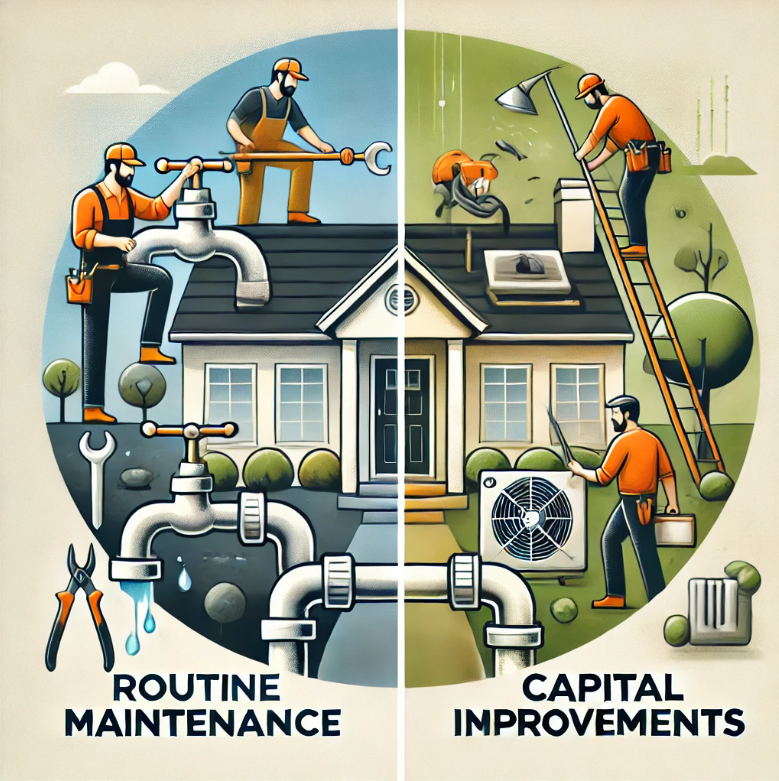One of the most common mistakes rental property owners make is lumping all expenses into one “repairs” category. It seems simple—but it leads to fuzzy financials, underfunded reserves, and surprise costs that hurt long-term returns.
To manage your properties confidently, you need to separate maintenance from capital improvements. They might both involve spending money, but they serve completely different purposes—and affect your planning in very different ways.
Let’s break it down.
Maintenance: Keeping Things Running Smoothly
Maintenance is the regular, ongoing work that keeps your property safe, functional, and comfortable for your residents. These are the tasks that pop up during a lease—and should be expected, especially in older homes.
Common examples include leaky faucets, HVAC tune-ups, appliance repairs, pest control, and lawn care.
These are part of keeping a home in working order. They’re typically lower in cost, more frequent, and expensed fully in the same year they occur.
Why it matters:
Recurring maintenance gives you insight into what’s functioning—and what might be nearing failure. For example, if you’re regularly pulling tree roots from the sewer line, that’s a red flag. It could mean the line is deteriorating and will eventually need full replacement. Tracking these recurring issues helps you shift from reactive to proactive.
Capital Improvements: Should Be Planned, Not Unexpected
Capital improvements are major repairs or upgrades that improve the property’s condition or extend the life of its systems. These aren’t just one-time fixes—they’re long-term investments in your asset.
Think: roof replacements, full HVAC systems, window upgrades, kitchen remodels, or major plumbing and electrical work.
These projects should be planned, not panic-driven. And while they can feel like surprise expenses, the truth is: most of them aren’t surprises if you’re watching system lifespans closely.
Know What’s Nearing the End of Its Life
We've trained our team to spot when a repair just doesn’t make sense anymore. For example, a furnace with a failed control board that’s already 19 years old might seem like a quick fix—but chances are, more repairs are right around the corner. Once a system reaches the end of its useful life, replacement often becomes the smarter and more cost-effective option.
Here’s a general guide to life expectancy:
Roof: 20–25 years
HVAC System: 15–20 years
Water Heater: 8–12 years
Furnace: 15–20 years
Appliances: 8–12 years
Knowing these timelines allows you to budget ahead, reduce downtime, and avoid making emotional decisions under pressure.
Bottom Line: Don’t Just Fix—Plan
Blending maintenance and capital improvements into the same budget category leads to confusion and poor forecasting. When you separate the two, you gain clarity, control, and the ability to make smarter long-term decisions.
The best investors don’t just react to issues—they plan for them. Whether it’s budgeting for an aging HVAC or deciding when a replacement makes more sense than another repair, separating these costs helps protect your investment—and your peace of mind.


